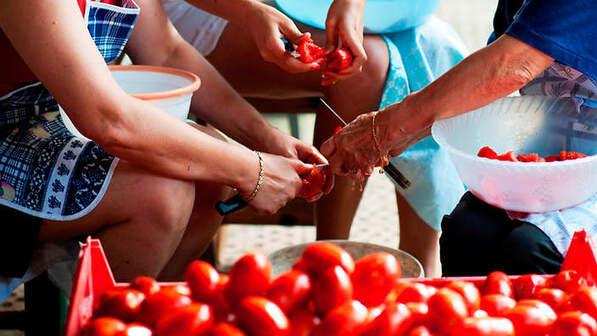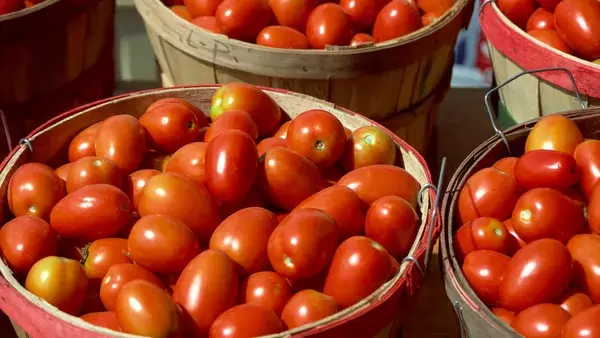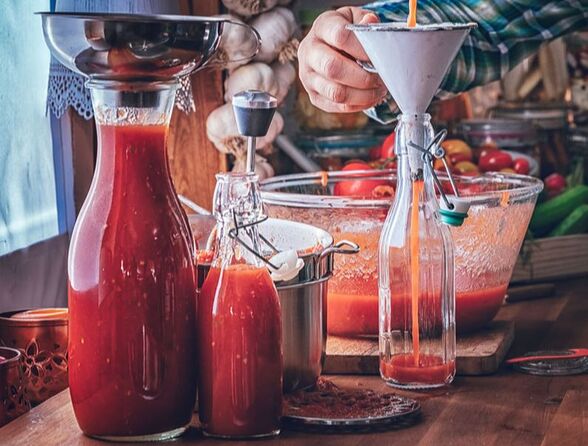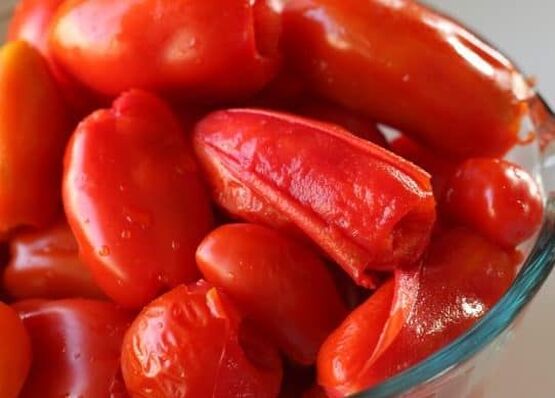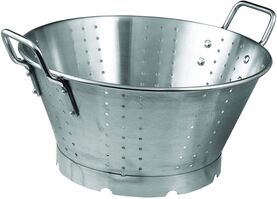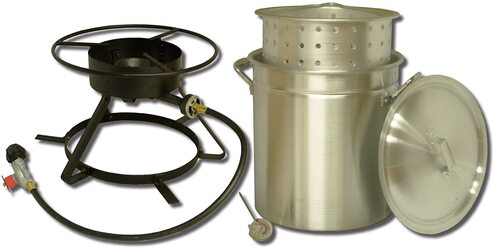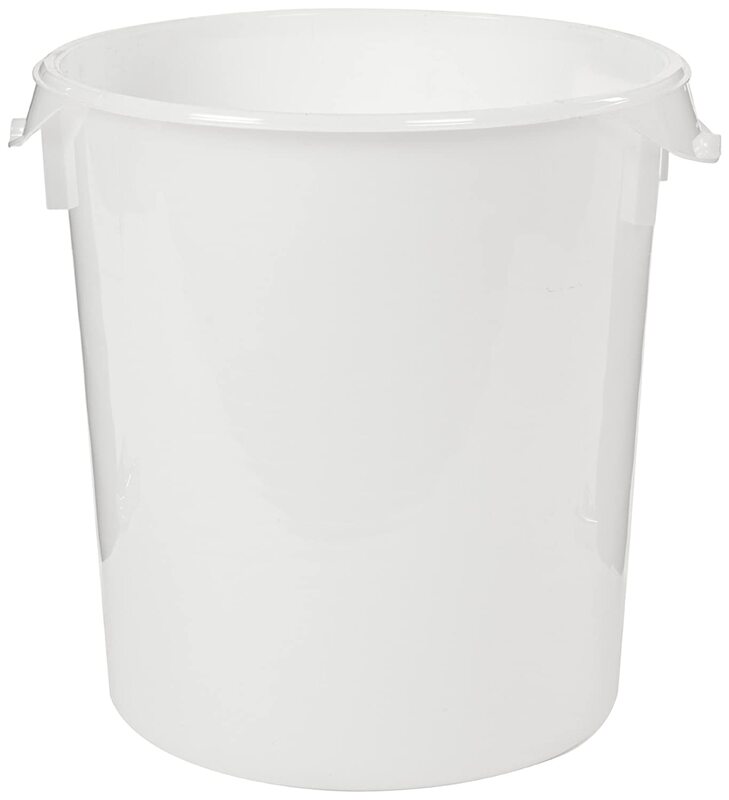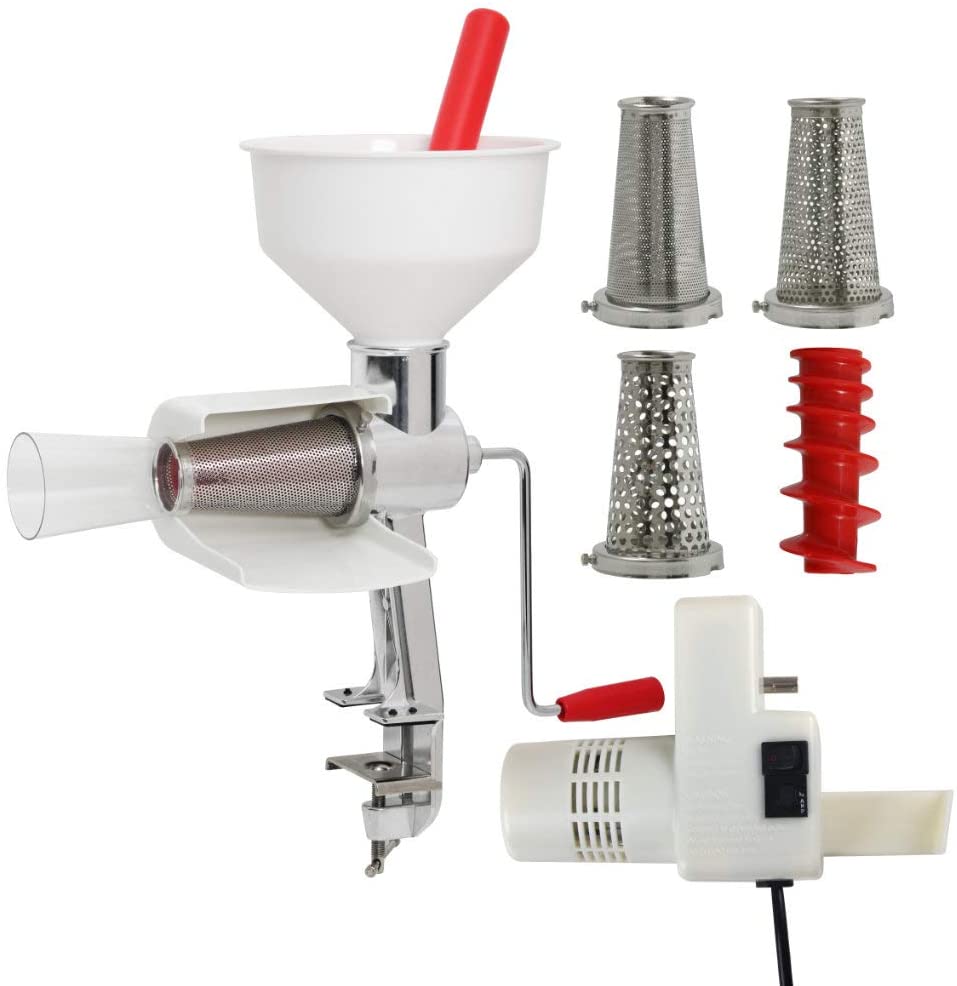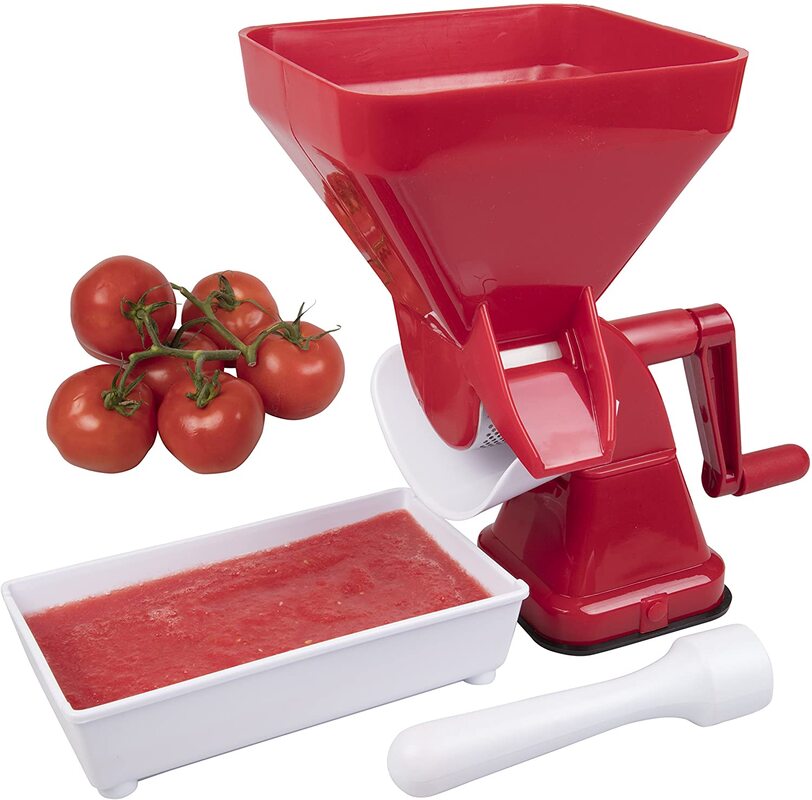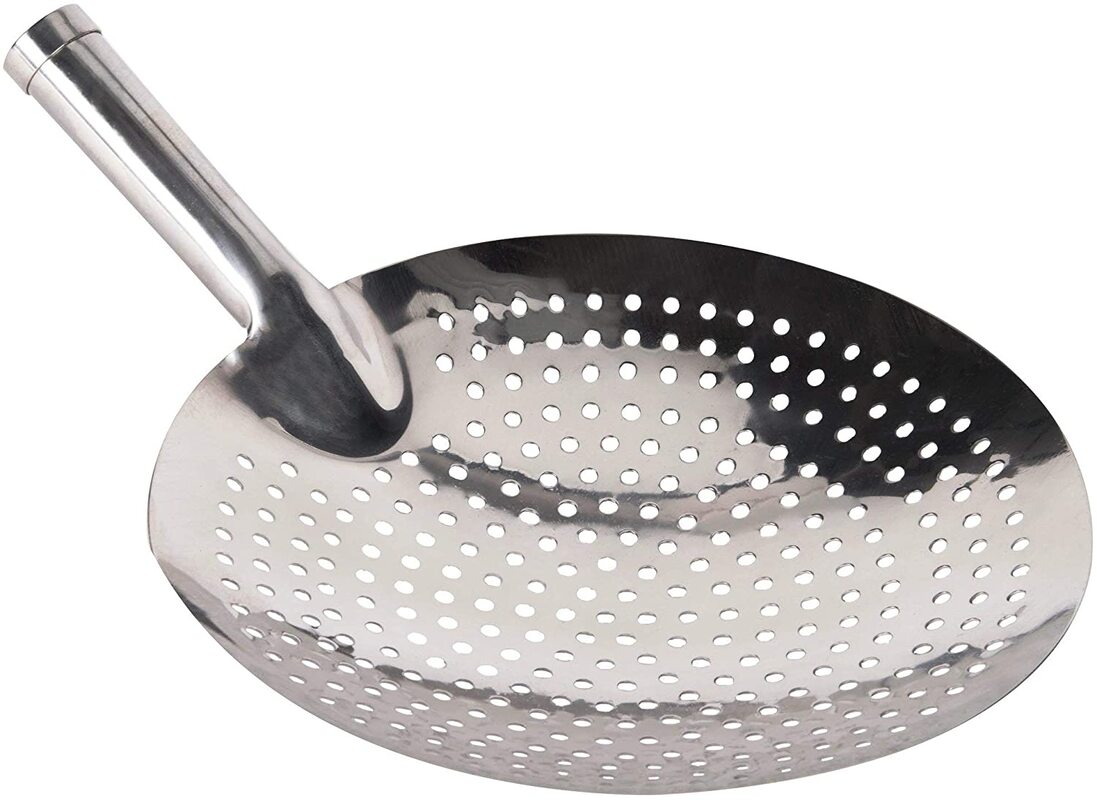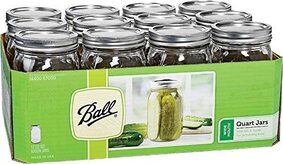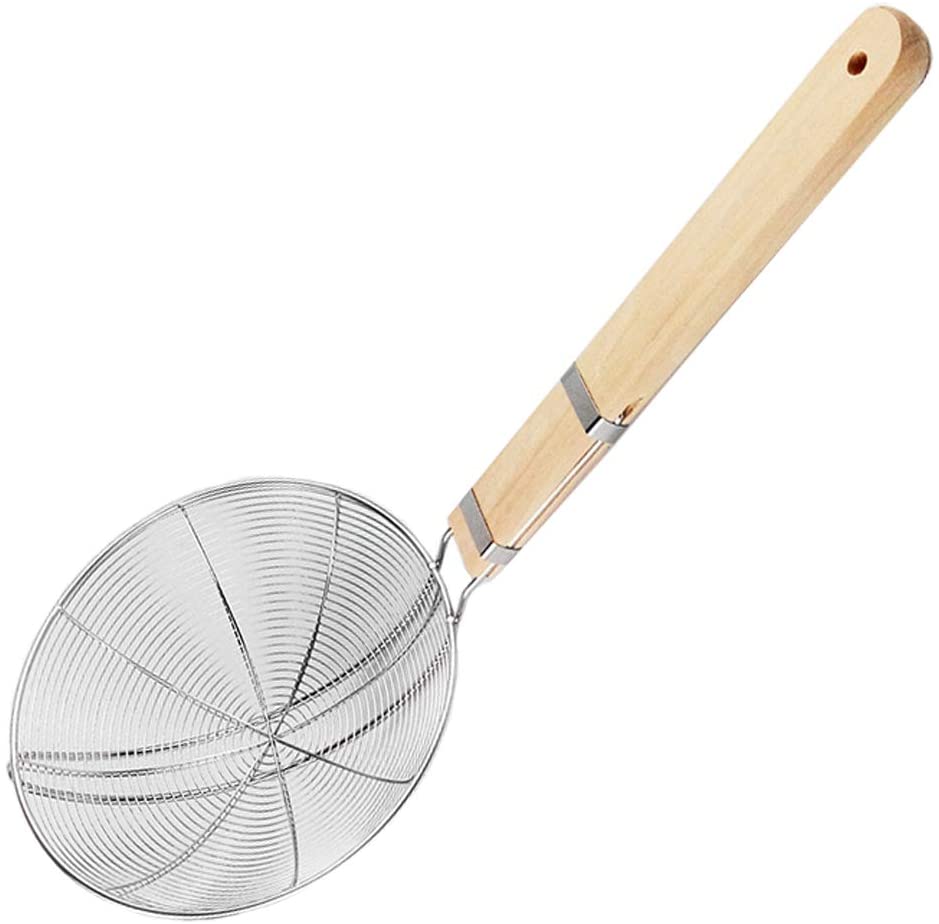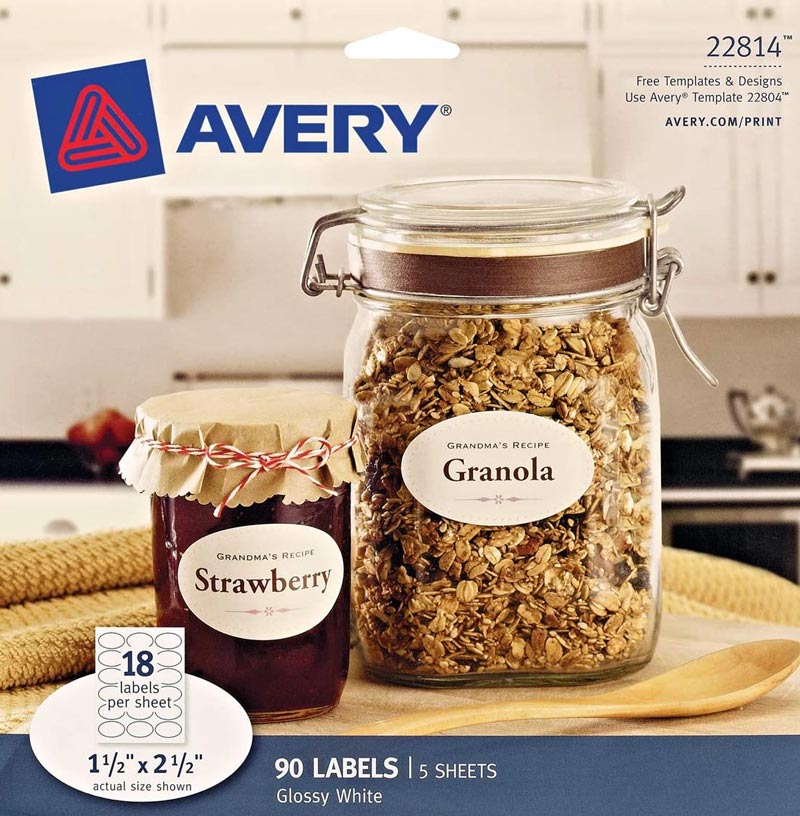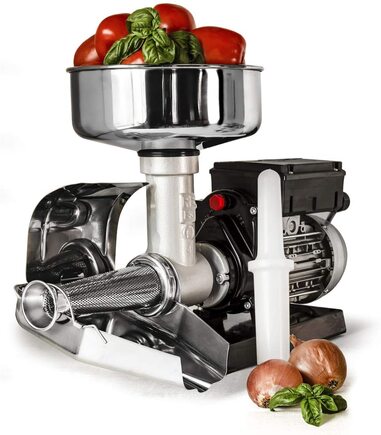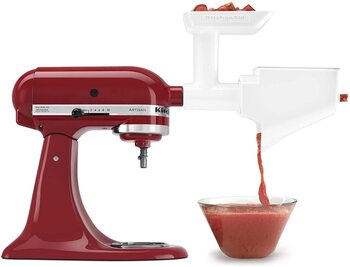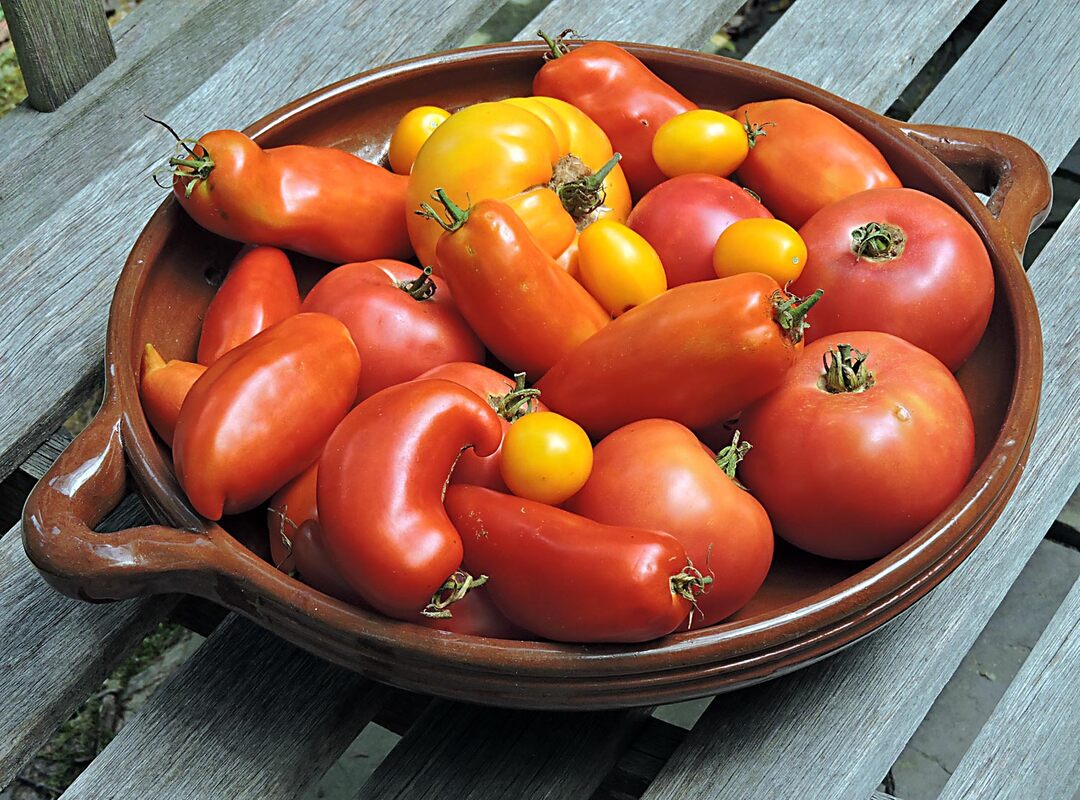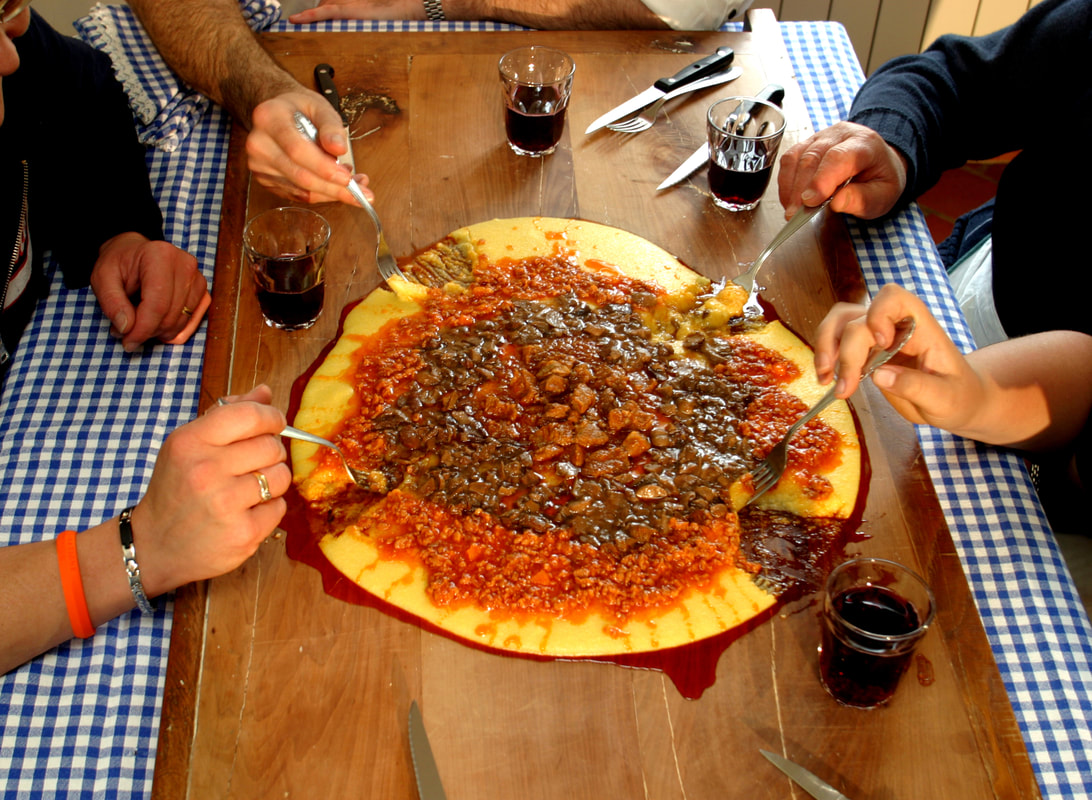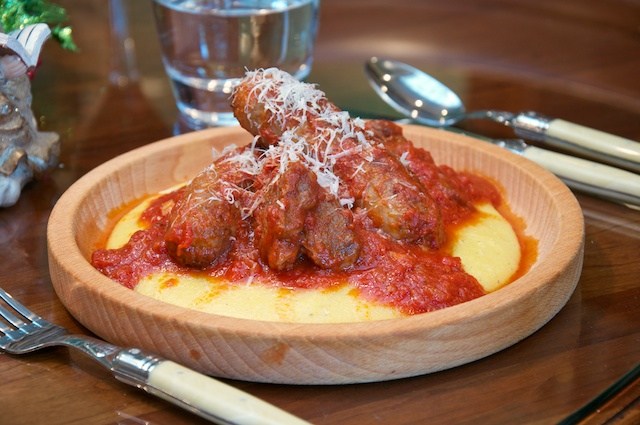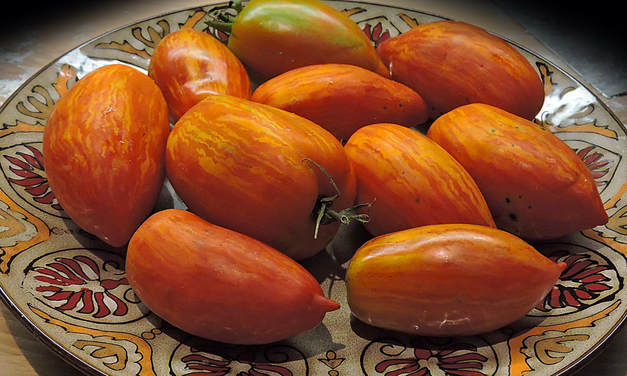|
This is the time of year when tomatoes are ripening on the vine in both the U.S. and Italy. Even if you don't grow your own tomatoes, this can be also the time to make your own Italian style passata di pomodoro--a basic tomato sauce that has all the skins and seeds removed, with all the flavor left behind. Here in the states, the closest canned product is called "tomato puree". Many families in Italy make the processing and canning of passata a yearly event--a family event--making enough jars of passata to last the entire year, often enough for extended famiglia. If you're not growing enough of your own paste style tomatoes, you can always buy a bushel or two or three from your local farm stand. Some Italian families will process up to 500 pounds of passata each year! Think of passata as a basic tomato sauce which you can use in all sorts of recipes, or even as a base to make other tomato-based sauces, such as Puttanesca, Amatriciana, Bolognese (ragu), Vodka sauce, sugo ("Sunday Gravy") or for pizza sauce. The word "passata" (passed, screened, smashed) refers to the processing with a special food mill that removes the seeds, pulp and skins, leaving only the tomato sauce behind. Other family recipes might just use a common food processor or blender, but this can't really give you a genuine passata. The cleaned, ripe tomatoes are cut up, boiled and processed to remove the skins and pulp, and finally canned in a traditional manner using a hot water bath and canning jars. Some family recipes might also add other spices or flavorings such as garlic as they boil the tomatoes, but since passata is a base to make a wide variety of sauces, you might want to add them at the time of cooking the final sauce. It is traditional, however, to add one large basil leave into each jar canned. 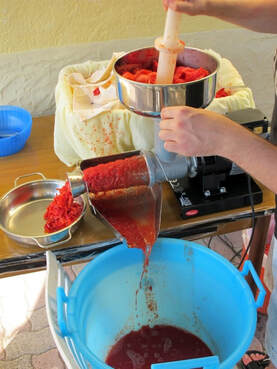 The Method of Making Passata Although you can make a passata in very small quantities, we will look at how to make a large volume for the purposes of canning and storage. We would love to promote this time honored, annual ritual here in the United States. Wouldn't it be better to have a yearly stock of your own tomato passata rather than buy supermarket sauces filled with chemical preservatives and other additives? What Type of Tomato is Best? In Italy, the best for this is San Marzano tomatoes (used in the best imported canned tomatoes), which have DOP protection and are only grown in the area of Naples surrounding Mount Vesuvius. Of course, many varieties are grown in the U.S. calling themselves "San Marzano", but they are only a similar variety. (You can't match San Marzano tomatoes because of their uniqueness of being grown in volcanic soils.) In reality, any good-tasting, full-bodied paste type tomato will work well. The tomato you select should have sweetness, depth of flavor, but also a touch of acidity--which benefits long preservation. Most paste tomatoes are thick fleshed and have a similar shape to San Marzano--that is, an elongated plum shape. You can also use larger cherry tomatoes or horn-pepper shaped varieties. Again, if it has a great taste, it will make a great passata. Leave the larger, beefsteak varieties for slicing and eating fresh. If you want to grow your own heirloom canning tomatoes from seed, we can highly recommend Striped Roma (horn shaped, sweet), Jersey Devil (horn shaped, very meaty), Debarao (plum shaped, juicy) and Martino's Roma (classic plum tomato). If you want to plant enough for lots of passata, plan on planting a minimum of 10 plants of one single variety that you earmark for canning. How Many Tomatoes? This really depends on how ambitious you are. if you use lots of tomato sauce in your recipes each year, then start with more tomatoes. You will also need more canning jars, lids and other varied supplies and tools. Having a very large pot or cauldron to boil the tomatoes helps prevent tedious, repeated boiling/canning sessions. I highly recommend doing it the way most Italians do it--using a tomato processing mill. I also love the way Italians use a very large pot to boil their jars and to do the final canning process--they use kitchen towels to layer in the glass jars to protect them from rattling around against each other. Here are some guidelines: 3 pounds of tomatoes to make 1 quart of passata. 21 pounds of tomatoes will make 7 quarts of passata. One bushel of tomatoes (about 53 lbs per bushel) will give you 15-18 quarts of passata. You will also be using sea salt and placing basil leaves into each jar.
Things You will Need
(For a large volume...)
You can use a standard hand-cranked food mill or a manual tomato milling machine to process the tomatoes, but if you're doing a large volume, you should consider investing in a powered tomato mill. The more power the unit has, the faster your processing will go. You might need to set up your milling machine on a low table, with bowl on the table to capture the pulp and a large container on the floor to capture the passata.
What About Canning Whole Tomatoes? In Italy, whole canned tomatoes are called pelati, referring to the process of peeling the skins off before canning. In the area of Naples, many families invest in crates of locally grown San Marzano tomatoes, but any pear/plum shaped past tomato will do fine. Before caning whole tomatoes, the best way to prevent spoilage is to remove the skins. Canning peeled tomatoes also affords more options for use in recipes that might call for crushed tomatoes. Skinned, whole tomatoes are easy to crush by squeeze by hand or pulsing in a food processor.
Don't forget to label your Passata and Pelati with the month and year. (Order oval Avery labels HERE on Amazon). Store them in a cool, dark place. They will last for as long as three years. Read this article carefully, watch the videos below and by all means, work safely! Make this a yearly event for your extended famiglia. I've read about families who take gather large teams together to process as much as 500 pounds of tomatoes! I would suggest starting small until you get used to the process. You can also make small volumes of passata or pelati right in your kitchen with a large stock pot, colander and tools you have lying around. And whether you use a manual tomato mill or powered, I'm sure you'll be successful and enjoy a fully packed cantina (pantry) all season long. --Jerry Finzi, GVI If you are new to canning, you can study the principles of safe canning HERE. Useful Processing Tools on AMAZON... The video below is one of the best I have found covering many aspects of making Passata and Pelati. There are some titles in English, but it might also help to click the gear icon on YouTube to turn on Closed Captions and Auto-Translate to select English... These are about 6 pounds worth of just a few of the 11 varieties of heirloom tomatoes we are growing in nostro giardano this year... The Large yellow beefsteak is Regina, the horn-shaped one is Jersey Devil, the small yellow grape shape is Olivette Juane, the large pink globe tomato is Giant Belgium (not so giant this season), and the smaller pink ball shape is Eva Purple Ball. All long lasting friends that I have grown for a couple of decades. All absolutely delizioso. Happy pesto season, tutti! --Jerry Finzi You might also be interested in...
 One of the cucina povera (poor kitchen) Christmas traditions in Italy is Polenta alla Spianatora (polenta on the board), a rustic meal of polenta served as a dinner during the cold nights between la Vigilia (Christmas Eve) and Capodanno (New Year's Day). What makes this meal so unusual is the manner in which it is served. In the old days, hot polenta was poured and spread out directly on the family's wooden table. A slow-cooked sugo (thick, meaty tomato sauce), peas and possibly sausages or pieces of braised pork were arranged in concentric circles. The bits of meat were a real treat for children in the poor, farming communities. Young and old alike were given forks and everyone would make their own trails in the hot mess of deliciousness, each staking out their own section. But as I've been told, in some homes there were rules: you weren't allowed to eat the meat until you ate a path to the center, with some slow eating children not having such luck! This manner of eating is a celebration of nature from the 15th century when corn was introduced to Italy from the New World. This dish is a celebration of the recent harvest... the circular shape of the polenta represented the sun, and it's corn having come from Mother Earth herself. All the ingredients topping this sun would have also been nurtured by the sun during the growing season: lentils, chickpeas, pork, chicken. This is an ancient meal that also celebrates life--and family. So everyone was at the table digging in. This is a big meal... with a large amount of polenta traditionally prepared in a copper pot resembling a modern wok. Nowadays, people tend to use a Spianatora (or spianatoia)--a modern day wooden cutting or pastry board--to pour the polenta onto. There are even some restaurants in southern/central Italy that will service this during the holiday season. To make this warming meal for your famiglia, first you need to make a Sugo. Here's a link to my own family's Sugo Recipe. 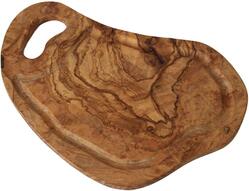 on Amazon on Amazon For the Polenta
Top this beautiful, hot mess with Parmigiano Reggiano or Romano and invite your amici and famiglia to start scraping. Buon appetito, Buon Natale and Felice Anno Nuovo! --Jerry Finzi My all-time favorite tomato is Eva Purple Ball--a pink-purplish, 2-3" round globe heirloom tomato that I've been growing for almost 20 years. ("Sweet like sugar", as my Dad always said about his home grown tomatoes). Eva is impeccably disease resistant, with a smooth, flawless skin and produces well. Next in line is Giant Belgium--a large, pink beefsteak tomato. Like Eva, it has a rich, sweet flavor, but large enough for one slice to cover a small dessert plate (great for caprese). But last year I found a fat, orange striped tomato in a local farmers' market that I fell in love with. I saved seeds from one of the biggest ones and planted two plants this season. Well, I'm in love again! This tomato is a large, plum style that grows about 3-5-1/5" long, with a pointy end (often with a very pointy nipple). Some grew so fat that I could not wrap my hand around them. It's very fleshy with low acidity--perfect for making sauce. But it's very sweet! I've gotten into slicing ovals on the bias for my panini and American style hoagie sandwiches. I've made sauces twice for pasta, and even used them sliced as a pizza topping (like I'm doing again tonight).
The only problem is, the chipmunks in my garden love them almost as much as I do.But even with those few losses, I'd estimate that the two plants produced about 20 pounds of these so far, and there's still a few on the plants coming ripe. I did several Google image searches until I verified the type--Striped Roma. I've already saved seeds for next season... You can find some seeds HERE. God, I love tomatoes. Home-grown, that is. --Jerry Finzi |
Archives
May 2024
Categories
All
|

